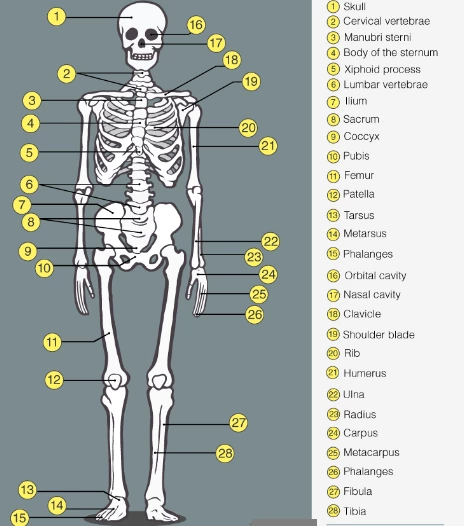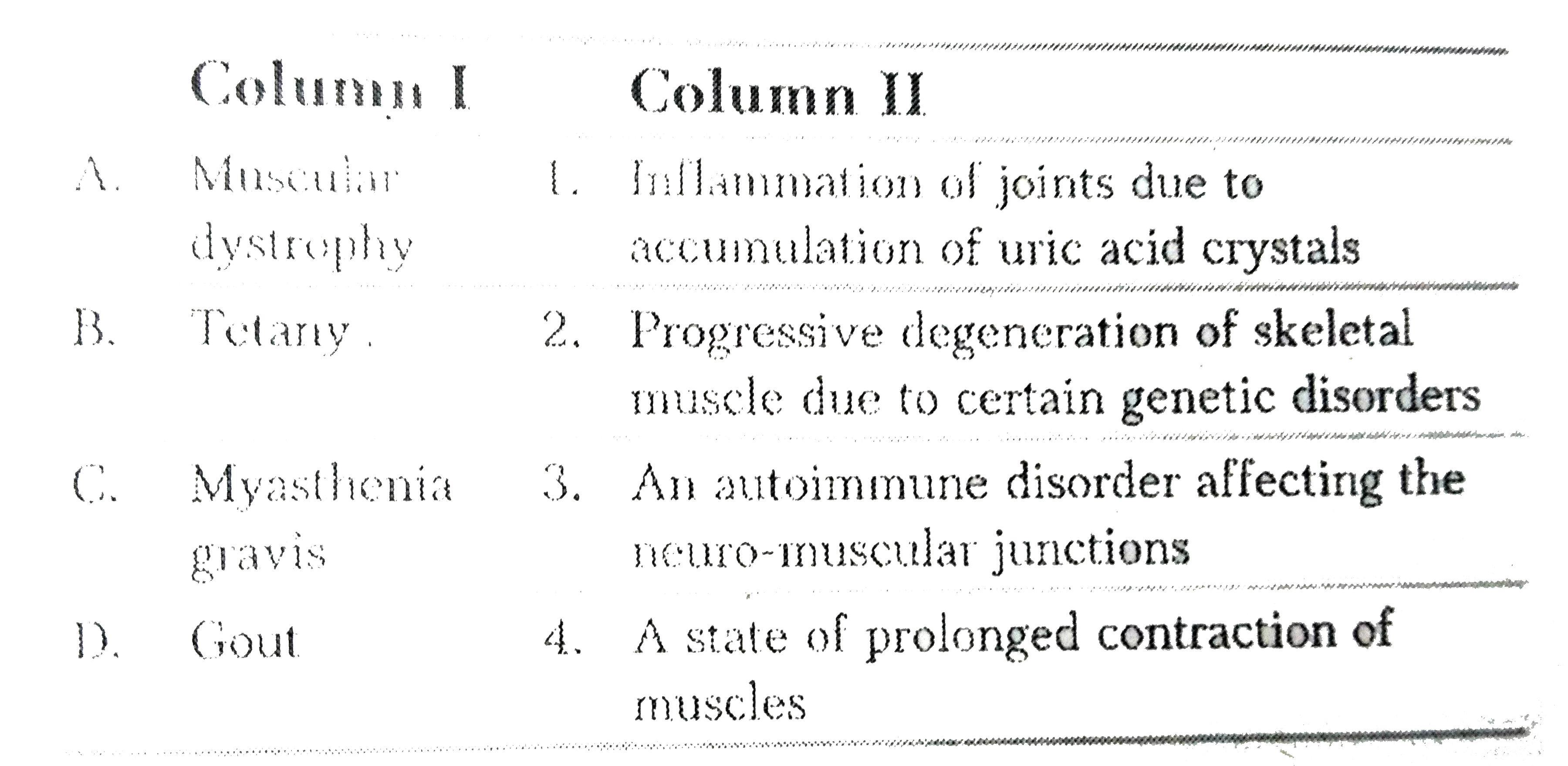Human Skeletal System
Human Skeletal System
The skeletal system works as the fundamental structure of a body, and the entire body is built around the hard system of the skeleton. It is the mix of the considerable number of bones and tissues related to ligaments and joints. Practically all the inflexible or strong parts of the body are the fundamental segments of the skeletal system. Joints have a significant work in the skeletal system as it helps in allowing the various sorts of developments in various areas. If a skeleton were without joints, at that point, there would be no indication of the developments in the human body.

This skeletal system can be partitioned into the axial and appendicular systems. In a grown-up body, it is composed of 206 individual bones which are composed into two fundamental divisions:
What is Axial skeleton?
The body's central axis is run along by the axial skeleton. In this manner, it is considered the central core of the human body. The axial skeleton is made out of 80 bones and it comprises of:
- Skull Bone – It comprises of, 14 facial bones, 8 cranial bones, 6 auditory ossicles, including the Hyoid Bone
- The bone of the Thoracic Cage – It comprises of 25 bones of the thorax-a breastbone and 24 ribs.
- The bone of the Vertebral column: It comprises of 24 vertebrae bones, the sacrum bone, and the coccyx bone.
Appendicular skeleton
The appendicular skeleton is made out of 126 bones and it includes the-
- Pelvic support
- Upper Limbs
- Lower Limbs
- Shoulder Girdle or the Pectoral
Skeletal System Physiology
The essential elements of the skeletal system incorporate development, support, protection, creation of blood cells, minerals storage, and regulation of endocrine system.
Support
The essential capacity of the skeletal system is to give the strong framework to help and protect the human body and its organs. This helps in keeping up the general state of the human body.
Protection
The skeletal system additionally assists with securing our inward organs and other sensitive body organs, including the mind, heart, lungs and spinal line by going about as a cradle. Our noggin (skull) secures our cerebrum and eyes, the ribs ensure our heart and lungs and our vertebrae (spine, spines) ensure our spinal string.
Movement
Bones give the essential structure to muscles to append themselves onto with the goal that our bodies can move. Ligaments are intense inelastic bands that connect our muscle to that specific bone.
Storage
The bone system of the skeletal system is predominantly engaged with putting away or saving various kinds of fundamental minerals which are required to encourage development and fix of the body cells and tissues. The phone system goes about as our calcium bank by putting away and discharging calcium particles into the platelet when required.
Regulation of Endocrine glands
The bone cells present inside the skeletal system assumes a significant job in discharging the blended hormones from the particular endocrine organs for additional prerequisite by the body for various digestion systems. Aside from these capacities, the skeletal system additionally adds to the regulation of blood sugar.
Related Videos:
- Name the two types of skeletal system
- Name the two principal divisions of skeletal system present in human beings
What is inside your bones?
Three fundamental sorts of material make up every bone in your body: compact bone, spongy bone and bone marrow.
Around 80% of each bone is compact bone, which is the hardest and most grounded sort of bone and is the thing that permits the body to help its weight. Compact bone makes up the external layers of the bone and ensures the internal pieces of the bones where numerous essential capacities happen, for example, bone marrow production. Compact bone comprises essentially of cells called osteocytes.
About 20% of each bone is spongy bone, which is loaded up with huge gaps and entries. Regularly found toward the parts of the bargains, the spongy bone material is loaded up with bone marrow, nerves and veins.
Two types of bone marrow fill the pores in spongy bone. Around half is red bone marrow, which is found essentially inside level bones, for example, shoulder bones and ribs. This is the place all red and white platelets and platelets (cells that help a cut quit dying) are made. Newborn child's bones contain all red bone marrow to create enough platelets to stay aware of the youths' development.
The other portion of marrow is yellow bone marrow, which is found in long bones, for example, thigh bones, and comprises fundamentally of fat. Veins go through the two sorts of bone marrow to convey supplements and expel squander from the bones.
Fundamental kinds of cells
There are four fundamental kinds of cells that are within bones: Osteoblasts, osteocytes, osteoclasts and lining cells.
- Osteoblasts are cells that make new or fix existing bone material as the bones develop or break. The phones make an adaptable material called osteoid and afterward invigorate it with minerals to solidify and reinforce it. At the point when osteoblasts effectively finish their activity, they resign to become osteocytes or covering cells.
- Osteocytes, found in the minimal bone, are liable for trading minerals and speaking with different cells in the region. They are framed from old osteoblasts that have stalled out in the focal point of bones.
- Osteoclasts separate existing bone material and reabsorb it. These phones frequently work with osteoblasts to recover and reshape bone after a break (the osteoclasts separate the additional callus framed by the mending procedure) to prepare for fresh blood vessels and nerves and to make bones thicker and more grounded.
- Lining cells happen to be the flat bone cells that totally spread the outside surface of bones. Their essential capacity is controlling the development of minerals, cells and different materials into and out of the bones.
Diseases of the skeletal system
Similarly, as with any piece of the human body, bones are prone to injury and disease.
We will have a look at some of the most common diseases which can lead to affecting the skeletal system include the following:
- Osteoporosis is a disease that makes the thickness and quality of bones decline since bone loss happens quicker than bone growth. It tends to be brought about by hereditary qualities or undesirable way of life propensities, (for example, absence of calcium or nutrient D, and substantial smoking or drinking with little exercise).
- Leukemia is a kind of disease that begins in the bone marrow and the lymphatic system, as indicated by the Mayo Clinic. A few sorts of leukemia influence different platelets and different systems of the body.
- Osteoarthritis is a disease that causes the breakdown of the cartilage that secures the ends of bones in joints. This absence of cartilage prompts bone-on-bone scouring, which can cause a lot of pain, harm to the bones and connective tissues, and so on.
Important Chapters:

Similar Questions
Knowledge Check
- Question 1 - Select One
Which is not a function of skeletal system
AProduction of eythrocytesBStorage of mineralsCProduction of body heatDLocomotion. - Question 2 - Select One
A Skeletal system consists of …..........
ABones and musclesBMuscles and nervesCBones and nervesDBones and cartilages - Question 3 - Select One
_________ and __________ constitute our skeletal system.
ABones and bloodBBlood and lymphCBones and cartilagesDBone and nervous
Appendicular skeletal system || joint disorders related to skeletal system
View SolutionMatch the following lists with reference to disorders of the muscular and skeletal system.
 View Solution
View SolutionName the two principal divisions of skeletal system present in human beings .
View SolutionThe movement of organs in human body requires the coordinated functioning of various systems in addition to skeletal system and muscular system. Discuss.
View SolutionSkeletal System || Bones OF Forelimb
View Solution

